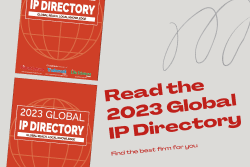Currently, many organizations are attempting to address their diverse intellectual property (IP) needs by implementing a series of distinct, AI-enhanced point solutions. Although these single-function tools offer an initial perception of cost savings, this fragmented strategy soon becomes a significant logistical burden. It inevitably leads to operational bottlenecks, heightened risk exposure, and hinders the IP function from realizing its full strategic potential. Organizations serious about their innovation pipeline are better served by a comprehensive, AI-powered IP management system.
Fragmented data silos and integration headaches
The fundamental weakness of the point solution model is its inability to manage the IP lifecycle as a cohesive whole. Using one software for invention disclosures, another for docketing patent deadlines, a third for trademark searching, and manual spreadsheets for expense tracking immediately results in the creation of data silos.
In this siloed environment, there is no single, reliable “Source of Truth.” Data must be manually entered, transferred, or painstakingly synchronized between systems, a process that is time-consuming and inherently prone to error. A simple change like an inventor’s change of address, the status of a provisional patent application, or a decision to abandon a foreign filing must be meticulously replicated across multiple databases.
When data is fragmented, so is visibility. IP professionals are forced into the role of data aggregators, wasting valuable time chasing information and verifying accuracy across multiple systems. More critically, complex, multi-system environments significantly increase the total cost of ownership (TCO). The collective cost of multiple licenses, vendor relationships, custom integrations, and the inevitable IT intervention required to keep disparate systems communicating far outweighs the perceived savings of a singular point solution.
The strategic power of a single platform
In contrast, an AI-powered, comprehensive IP management system provides a single, centralized platform designed to handle the entire IP lifecycle, from the moment an idea is conceived to the eventual monetization or abandonment of the resulting asset.
The key trait of an end-to-end system is its ability to streamline the entire IP workflow. The journey of an invention – from Invention Disclosure (ID) capture to internal legal review, and then to national and international filings – is managed seamlessly within one system. Crucial administrative tasks are automated, moving the IP team from reactive “firefighting” to proactive, strategic managers. Comprehensive systems exist that already leverage AI and will continue to add more of these capabilities in the future.
Already, these systems leverage AI in key capabilities that include:
- AI-based patent summaries – Quickly lets IP organizations surface insights for patents from sources like email, meeting transcripts, etc.
- Form pre-population – Data entered once at the ID stage automatically populates subsequent forms, reducing manual effort and ensuring data consistency across all official documents.
- Patent comparison – Enables organizations to compare their competitors’ patent portfolios against their own.
- Time & billing – Time and billing capabilities are AI-powered, reducing the time it takes for IP teams to track and accurately report their activities.
Enhanced collaboration and transparency
IP management is inherently a collaborative effort, involving inventors, R&D teams, legal counsel, business unit leaders, and external law firms. A unified platform breaks down departmental barriers, offering a single portal where all stakeholders can interact, review documents, and approve decisions.
This centralized transparency leads to faster decision-making cycles. An R&D manager can instantly check the prosecution status of an entire project’s patent family, while a legal administrator can seamlessly share an office action with the corresponding inventor for technical clarification. Better communication, facilitated by the platform, ensures the IP strategy remains consistently aligned with overarching business and market goals.
The next frontier: augmenting IP with AI intelligence
The true value multiplier of a comprehensive IP management system is its ability to seamlessly integrate the latest AI and Machine Learning (ML) capabilities. Point solutions cannot leverage AI strategically because the data required for intelligent analysis is scattered. An end-to-end system, however, provides the clean, centralized data lake that AI needs to operate across the entire workflow. This AI integration elevates IP management from mere administration to high-level strategic intelligence. Some additional high-value, AI-powered capabilities that will be available in the first quarter of 2026 include:
- Enhanced AI docketing – Automates data extraction and validation from global IP office documents, emails, agreements, and more, with virtually no user action required. Ensuring data integrity, it intelligently reads and processes these inputs, flags discrepancies, and supports batch updates with oversight from IP teams. By eliminating manual data entry, this solution dramatically reduces administrative workload and transforms how IP teams manage deadlines, documents, and compliance requirements, while freeing capacity for quality assurance and more strategic activities.
- AI IP classification – Will revolutionize patent classification by delivering fast, fully reasoned patent classification. It will map internal and external portfolios to an IP team’s private taxonomy for instant competitive insight and strategic decision-making.
- AI document analysis, translations, and reporting – Enables IP professionals to interact with documents in natural language, and the advanced AI translations engine specialized for IP and legal work enables seamless global collaboration and ensures the translated content meets legal and technical precision requirements. Also, the AI reporting capabilities can ingest long or complex documents and combine updates from multiple sources into a single report, keeping stakeholders aligned without requiring hours of manual reading.
- AI-based online brand protection – Monitors online platforms to identify incidents of infringement using image recognition and text matching, helping brands safeguard their assets in real time.
From quick fixes to strategic advantage
While point solutions may offer quick fixes for isolated problems, they cannot provide the stability, compliance, and strategic visibility required to manage a valuable and complex modern IP portfolio. Furthermore, they lack the unified data foundation necessary to integrate the cutting-edge benefits of AI.
The transition to an AI-powered, end-to-end IP management system is not an IT upgrade; it’s a strategic investment in future competitiveness. By consolidating data, automating processes, and enhancing human expertise with sophisticated AI tools, these unified platforms will help IP teams to streamline operations, reduce manual workloads, and enhance strategic decision-making.

Written by Toni Nijm
Chief Product Officer, Anaqua
You may also like…
The semaglutide saga continues: navigating generic entry and reinforcing patent strategies in Canada
In our July 2025 analysis, “The Semaglutide Story: Highlighting the Need to Maintain Patent Protection in Canada,” we...
Smart AI automation in IP management
Just like websites, smartphones, and open-source software dramatically changed our modern era, artificial intelligence...
AI and the corporate IP landscape: strategic transformation and the road ahead
The pace of change in intellectual property (IP) management is accelerating, and artificial intelligence (AI) is at...














